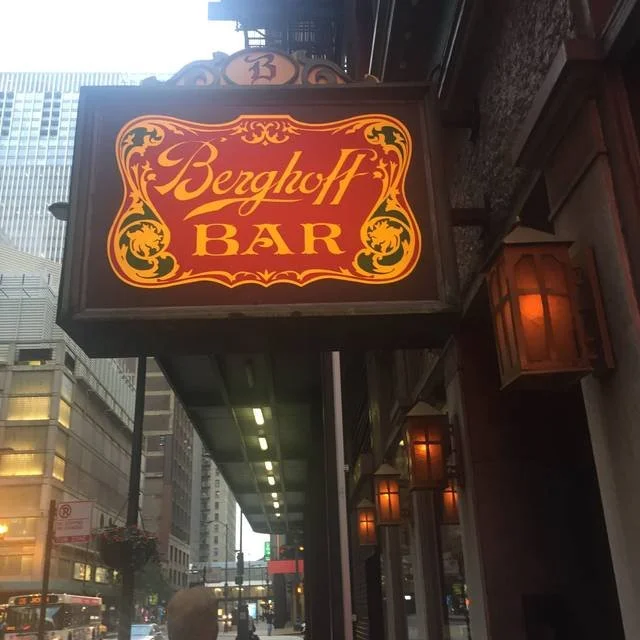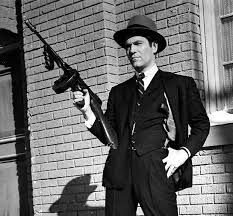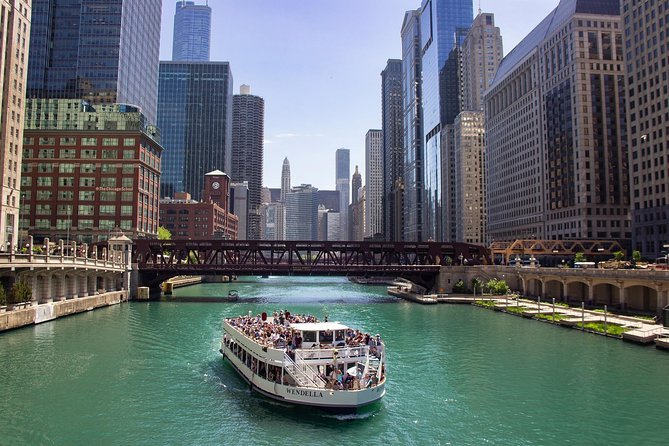
History and Local Guide
Local Attractions & Restaurants
-

Giordano's
What better way to experience the Chicago Deep Dish Pizza than at one of the oldest and pizzerias in Chicago. But its origin began in a small northern Italian town near Torino, Italy.
-

Ice Cream Museum Tour
Once you’ve entered the Chicago Museum of Ice Cream, you’ll have 14 bright and beautiful, interactive installations at your disposal—and more selfie spots than you can shake an ice cream stick at. You can eat unlimited ice cream as you explore the space, in the form of different shapes and flavors, and show off your putting skills at sweet-treat themed crazy golf course.
-

The Berghoff
Craving a little local history (and maybe a cold beer)? Then head to The Berghoff, Chicago’s most famous German restaurant. The Berghoff was established in 1898, but you can trace its roots back to the 1893 Chicago World’s Fair, when Herman Berghoff set up a stand to sell his beers to the crowds. Locals gather here for classic German dishes, like spätzle and Bavarian pretzels, in an old-world setting — plus steins of German-style beers.
-

Garrett's Popcorn
Garrett Popcorn Shops was started by a female entrepreneur, who developed the now-famous recipes in her family kitchen. The first Shops in Chicago sold Caramel Crisp, Cheese Corn, Buttery and Plain for 5 cents a bag alongside homemade fudge and roasted nuts. Kernels were hot-air popped, Caramel Crisp was cooked in copper kettles, and finished recipes were hand scooped right before fans’ eyes. Just like today.
-

Ganster's & Ghost Tour
Dive into the City’s History of the famous Mob Boss, Al Capone, and the Speakeasy’s of the 1920’s & 30’s and early prohibition.
The area most associated with gangster era crime and haunting is know as “The Loop”. This was the cities vice district during the roaring 20’s and 1930’s riddled with speakeasy saloons, secret underground tunnels used by bootleggers and the headquarters of famous gangsters such as Al Capone. The tour is about 1.5 miles long with frequents stops and a refreshment/restroom break. Bring your walking shoes!
-

Field Museum of Natural History
The Field Museum is home to SUE, most complete T. rex, plus more than 35 world-renowned exhibitions. Discover Inside Ancient Egypt, where 23 Egyptian mummies and 5,000 year-old hieroglyphics reside. In Underground Adventure, visitors “shrink” to 1/100th of their natural size to explore a subterranean world. Be dazzled in our new Hall of Gems. Marvel at one of the largest collections of Chinese jade in North America in our Hall of Jades. Journey through 13,000 years of history in the Ancient Americas from the Ice Age mammoth hunter to the temples of the Incas and Aztecs. Looking for dinosaurs? – this is the place!
-

Theatre
Broadway In Chicago presents a full range of entertainment, including musicals and plays, on the stages of five of the finest theatres in Chicago’s Loop including the CIBC Theatre, James M. Nederlander Theatre, Cadillac Palace Theatre, the Auditorium Theatre of Roosevelt University and just off the Magnificent Mile, the Broadway Playhouse at Water Tower Place. Broadway In Chicago is best known for attracting pre-Broadway productions, including THE PRODUCERS, THE ADDAMS FAMILY, and KINKY BOOTS, as well as long-run engagements including Disney’s THE LION KING, just to name a few.
-

River Cruise
Journey through Chicago's architectural wonders and unveil over 130 years of design, innovation, and history. Cruise along all three branches of the Chicago River while your architectural guide narrates the evolution of Chicago's skyline and the significance of each landmark. See iconic structures like the Willis Tower, Centennial Fountain, and the Merchandise Mart. Glide past the Chicago Water Tower and the Art Institute of Chicago, and admire the historic Wrigley Building. Take in the sights of the Chicago Riverwalk, the Lyric Opera of Chicago, and the unique Marina City apartment buildings.
“THE WINDY CITY”
We all heard the nickname for Chicago as, “the Windy City;” but, according to the History Channel Online: “The origins of Chicago’s famous nickname are not entirely clear. The most obvious explanation is that it comes from the frigid breezes that blow off Lake Michigan and sweep through the city’s streets. However, another popular theory holds that it was coined in reference to Chicago’s bloviating residents and politicians, who were deemed to be “full of hot air.”
Proponents of the “windbag” view usually cite an 1890 article by New York Sun newspaper editor Charles Dana. At the time, Chicago was competing with New York to host the 1893 World’s Fair (Chicago eventually won), and Dana is said to have cautioned his readers to ignore the “nonsensical claims of that windy city.”
Dana is often credited with popularizing the “Windy City” moniker, yet according to David Wilton’s book Word Myths: Debunking Linguistic Urban Legends, researchers have never managed to find his original article. Many now dismiss it as a myth. Even if Dana’s editorial does exist, it’s unlikely that either he or the World’s Fair debate were responsible for popularizing Chicago’s nickname.
Etymologist Barry Popik, a longtime researcher of the Windy City question, has uncovered evidence that the name was already well established in print by the 1870s—several years before Dana. Popik also dug up references showing that it functioned as both a literal reference to Chicago’s windy weather and a metaphorical jab at its supposedly boastful citizenry. Many of the citations are found in newspapers from other Midwest cities, which were in a rivalry with Chicago over who was the region’s main metropolis.
For example, an 1876 headline in the Cincinnati Enquirer used the phrase “That Windy City” in reference to a tornado that swept through Chicago. “The Cincinnati Enquirer’s use is clearly double-edged,” Popik told the Chicago Tribune in 2006. “They used the term for windy speakers who were full of wind, and there was a wind-storm in Chicago. It’s both at once.”
Since Chicago had previously used its lake breezes to promote itself as a summertime vacation spot, Popik and others conclude that the “Windy City” name may have started as a reference to weather and then taken on a double meaning as the city’s profile rose in the late-19th century.
Interestingly, although Chicago may have gotten its nickname in part because of its fierce winds, it’s not the breeziest town in the United States. In fact, meteorological surveys have often rated the likes of Boston, New York and San Francisco as having higher average wind speeds.”
BY: EVAN ANDREWS


